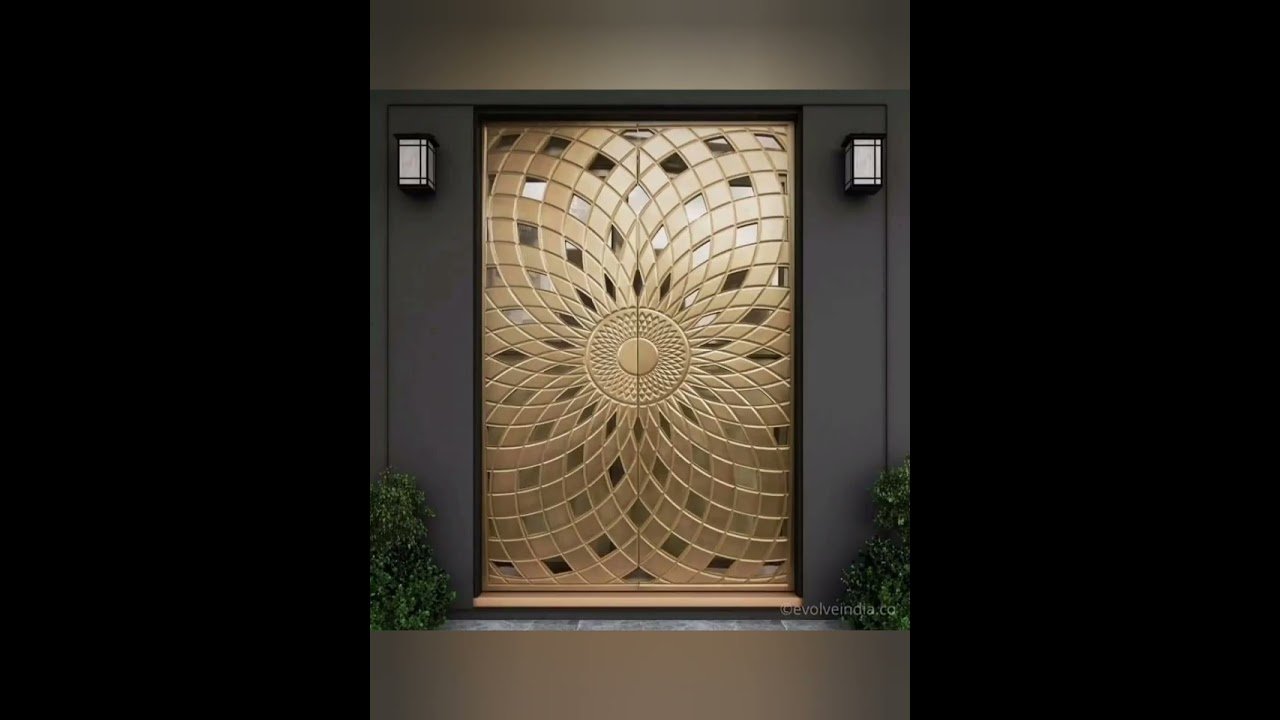The Art and Functionality of House Door Design: A Comprehensive Guide
In the realm of home design, the humble house door often plays a more significant role than many might assume. Beyond serving as a practical barrier between the interior and exterior of a home, the door is a focal point that can set the tone for the entire property. With a myriad of designs to choose from, understanding the nuances of house door design can help you enhance both the aesthetics and functionality of your home.
The Importance of Door Design
House doors are more than just entry points; they are a critical element of your home’s first impression. The right door design can reflect your personal style, complement architectural features, and contribute to overall curb appeal. Additionally, doors have functional aspects such as security, insulation, and durability that are essential for a comfortable living environment.
Types of House Doors
Panel Doors
- Description: Panel doors are composed of several panels that can be flat or raised, often framed by horizontal and vertical stiles and rails.
- Aesthetic Appeal: They offer a classic look and can be customized with various panel arrangements and designs. Ideal for traditional and transitional homes.
Flush Doors
- Description: Flush doors feature a flat, smooth surface with no visible panels or decorations.
- Aesthetic Appeal: Their minimalist design makes them perfect for modern and contemporary homes. They can be finished in a variety of materials and colors.
French Doors
- Description: French doors are characterized by their multiple panes of glass, often extending the full length of the door.
- Aesthetic Appeal: They provide a stylish way to let in natural light and offer a sense of elegance and openness. Great for both interior and exterior applications.
Sliding Doors
- Description: Sliding doors operate on a track system, allowing them to open horizontally.
- Aesthetic Appeal: Ideal for saving space and offering a sleek, modern look. They are commonly used for patios or dividing spaces within the home.
Barn Doors
- Description: Barn doors slide open on a visible track, often made from reclaimed wood.
- Aesthetic Appeal: These doors bring a rustic charm to any space, perfect for farmhouse or industrial-style homes.
Dutch Doors
- Description: Dutch doors are divided horizontally, allowing the top half to open independently of the bottom half.
- Aesthetic Appeal: They add a quaint, charming touch and are particularly functional for homes with children or pets.
Glass Doors
- Description: Glass doors can be fully transparent or frosted for privacy, available in framed or frameless designs.
- Aesthetic Appeal: They maximize light flow and can modernize any space, making them suitable for contemporary and luxury homes.
Materials and Finishes
Wood
- Description: Traditional and versatile, wood doors can be crafted from a variety of species, including oak, mahogany, and walnut.
- Advantages: Offers warmth, natural beauty, and can be stained or painted to suit any decor.
Steel
- Description: Steel doors are known for their strength and durability.
- Advantages: Highly secure, resistant to weather, and available in various finishes, including sleek, modern options.
Fiberglass
- Description: Fiberglass doors are designed to mimic the look of wood but are more resistant to the elements.
- Advantages: Low maintenance, energy-efficient, and durable.
Aluminum
- Description: Lightweight and durable, aluminum doors are often used in modern architecture.
- Advantages: Resistant to corrosion, with a sleek, contemporary appearance.
Design Considerations
Style and Architecture
- Match your door design to the architectural style of your home. Traditional homes may benefit from classic panel doors, while modern homes might call for sleek, minimalist designs.
Security
- Consider doors with enhanced security features like multi-point locking systems, reinforced materials, and secure hardware.
Energy Efficiency
- Look for doors with good insulation properties to help maintain energy efficiency and comfort within your home.
Durability and Maintenance
- Choose materials that will withstand your local climate and lifestyle demands. For instance, fiberglass and steel doors require less upkeep compared to wood.
Customization
- Many door designs can be customized with various finishes, colors, and hardware to fit your personal style and functional needs.
Conclusion
Choosing the right house door design is a blend of art and functionality. Whether you’re aiming to enhance your home’s curb appeal or improve its security and energy efficiency, understanding the different types of doors and materials available can guide you toward the perfect choice. A well-designed door not only welcomes guests but also stands as a testament to the character and charm of your home.
